HTML
--> --> -->It was interpreted in analogy by the fission of a charged liquid drop shortly after the discovery of nuclear fission. Fission occurs as a result of competition between the disrupting effect of Coulomb repulsion and the stabilizing effect of surface tension [10-12]. In recent years, many theoretical methods have been developed to calculate and reproduce the fission fragment mass distribution, which is one of the most important tests in the theoretical model describing the nuclear fission process. Macroscopic models [13-20] are used to explain the mechanism of nuclear fission by a numerical solution of the Langevin equations [21-23] or quantum-mechanical tools [24-25]. Microscopic models [26-31] describe the nuclear fission based upon the consideration of an effective energy density functional theory [32-33] and the time-dependent Hartree-Fock method [34-37], which is minimized in a chosen trial subspace of the full many-body Fock space while subject to external constraints on the density distribution. The macroscopic-microscopic approaches [38-42] are developed to calculate the nuclear potential-energy surface by uniting a macroscopic liquid-drop like energy functional and a microscopic contribution expressing the shell and pairing corrections, which can calculate the potential energy of any nuclear system with Z protons and N neutrons as a function of the nuclear shape. Macroscopic models, microscopic models, and macroscopic-microscopic approaches have been widely used in calculating potential energy surface distributions and nuclear masses at the ground state. Moreover, the developed statistical approaches [43-48] and phenomenological approaches [49-57] can calculate and predict the manifold fission observables with reasonable accuracy, which provide reliable fission yields required for applications in nuclear technology.
The scission point model, as a typical statistical approach, can calculate and reproduce yield distributions where the nuclear structure of the fragments is considered. With high excitation energy, the shape of the fissioning nucleus tends to be spherical. At the scission-point, both daughter nuclei are gradually deformed owing to the nuclear and Coulomb interactions (polarization effect). The potential energy surfaces are determined by all possible configurations at the scission-point. [43] This is well described in Refs. [43-48] from symmetric to asymmetric charge distributions for neutron-induced actinide nuclei fission with increasing incident neutron energy.
The problem of the dependence of the fission fragment mass distributions on the excitation energy is highly relevant at the present time. The symmetric components of the mass and charge yields are enhanced with increasing excitation energy. In this work, the scission point model is improved by considering the excitation-dependent liquid drop energy model to calculate and evaluate the mass distributions of neutron-induced typical actinide fission, including 235,238U, 237Np, 239Pu, and 232Th. The improved scission point model can calculate the pre-neutron-emission mass distributions for incident-neutron-energies up to 99.5 MeV with reasonable accuracy.
The statistical scission-point model relies on the assumption that statistical equilibrium is established at the scission point. The fission fragment distribution is determined by the probability of given fragmentation combinations. The potential energy surface
$ \begin{aligned}[b] U({A_i},{Z_i},{\beta _i},R) =& {B_L}({A_L},{Z_L},{\beta _L},E_L^ * ) \hfill \\& {\text{ }} + {B_H}({A_H},{Z_H},{\beta _H},E_H^ * ) - B(A,Z,\beta ,{E^ * }) \hfill \\& {\text{ }} + {V_C}({A_i},{Z_i},{\beta _i},R) + {V_N}({A_i},{Z_i},{\beta _i},R) \hfill \\ \end{aligned} $ | (1) |
The binding energy of each fragment is composed of the excitation-dependent liquid drop energy
$ {B_i}({A_i},{Z_i},{\beta _i},E_i^ * ) = U_i^{\rm LD}({A_i},{Z_i},{\beta _i},E_i^ * ){\text{ + }}\delta U_i^{\rm shell}({A_i},{Z_i},{\beta _i},E_i^ * ). $ | (2) |
The influence of excitation energy on mass distributions results from the tricky competition between the macroscopic liquid-drop energies and the microscopic shell corrections at scission. Particularly, it is necessary to consider the influence of the excitation energy effects on the deformations of light and heavy fragments in the scission point model, considering the excitation-dependent liquid drop energy model.
The liquid-drop surface energy
$ U_i^s{\text{ = }}{a_s}(1 + 0.15E_i^*/{A_i})A_i^{2/3} . $ | (3) |
$ {U}_{i}^{\rm C}\text={a}_{c}\frac{{Z}_{i}({Z}_{i}-1)}{{A}_{i}^{1/3}}(1-{Z}_{i}^{-2/3})\times (1-{10}^{-3}{E}_{i}^{*}/{A}_{i}). $ | (4) |
$ U_i^v{\text{ = }}{a_v}(1 + 0.0{\text{034}}E_i^*/{A_i}){A_i} . $ | (5) |
$ U_i^{\rm sym}{\text{ = }}{a_{\rm sym}}{I^2}(1 + 2*{10^{ - 4}}E_i^*/{A_i}){({N_i} - {Z_i})^2}/{A_i} $ | (6) |
The shell damping correction with excitation energy
$ \delta U_i^{\rm shell}({A_i},{Z_i},{\beta _i},E_i^ * ) = \delta U_i^{\rm shell}({A_i},{Z_i},{\beta _i},E_i^ * = 0)\exp \left( { - E_i^ * /{E_D}} \right), $ | (7) |
The interaction potential consists of the Coulomb interaction potential
$\begin{aligned}[b] {V_N}(R){\text{ = }}&{C_{\text{0}}}\left\{ {\frac{{{F_{in}} - {F_{ex}}}}{{{\rho _{00}}}}\Bigg(\int {\rho _1^2(r){\rho _2}(r - R){\rm d} r} } \right.\\&\left. { + \int {{\rho _1}\rho _2^2(r - R){\rm d}r\Bigg) + {F_{ex}}\int {{\rho _1}(r){\rho _2}(r - R){\rm d}r} } } \right\} \end{aligned}$ | (8) |
The
The relative formation probability w in Eq. (9) of the DNS with fragments of certain charge numbers, mass numbers, and deformations can be described as
$ w({A_i},{Z_i},{\beta _i},{E^ * }) = \exp \left[ - \frac{{U({A_i},{Z_i},{\beta _i},{R_m}) + {B_{qf}}({A_i},{Z_i},{\beta _i})}}{T}\right], $ | (9) |
$ Y({A_i},{Z_i},{E^ * }) = \int {{\rm d}{\beta _L}} {\rm d}{\beta _H}w({A_i},{Z_i},{\beta _i},{E^ * }). $ | (10) |
$ Y({A_i},{E^ * }) = {N_0}\sum\nolimits_{{Z_i}} {Y({A_i},{Z_i},{E^ * })} . $ | (11) |
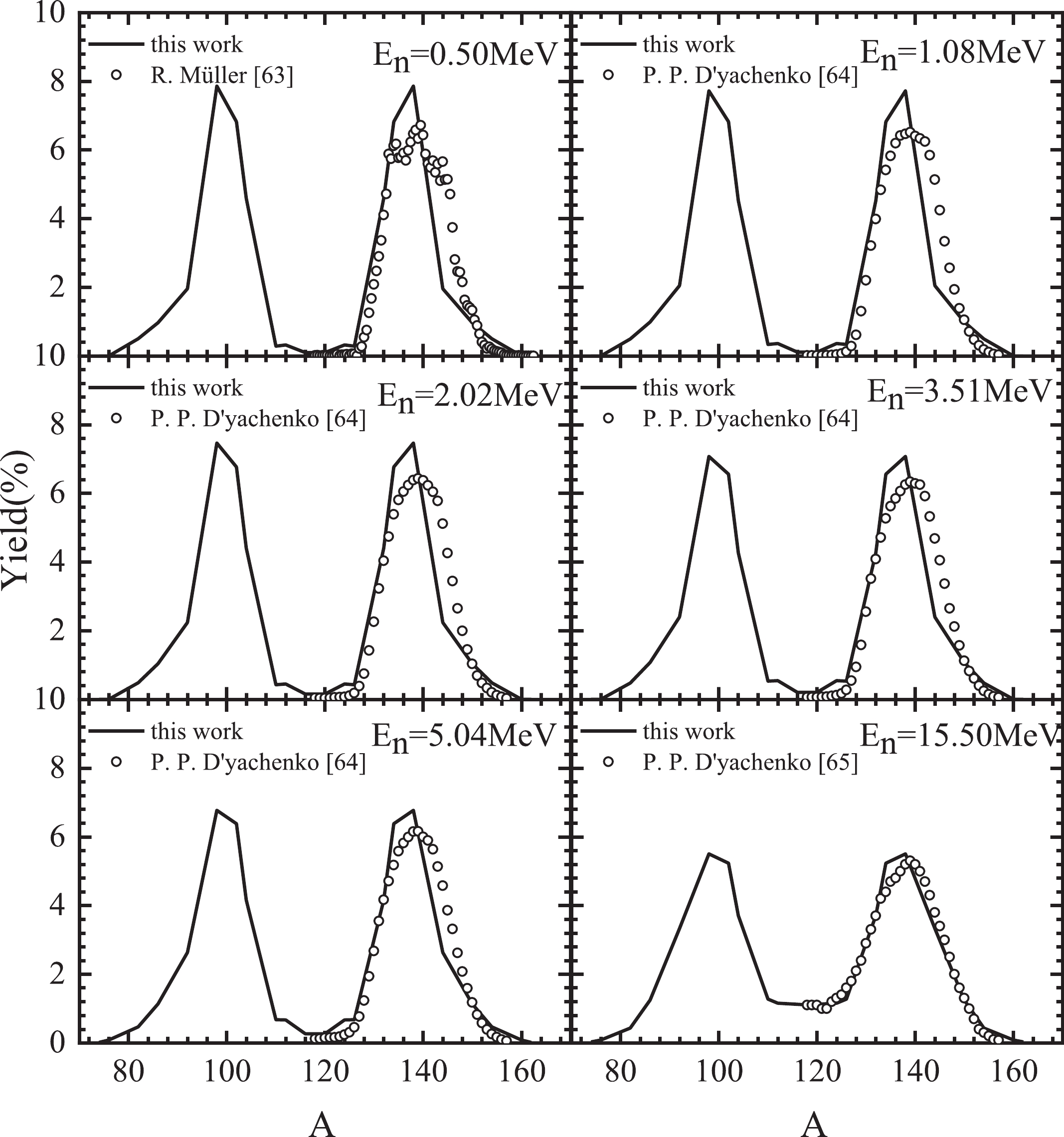 Figure1. Comparison between the calculated pre-neutron-emission mass distributions (solid lines) and experimental data (symbols) for neutron-induced 235U with incident-neutron-energies of 0.50, 1.08, 2.02, 3.51, 5.04, and 15.50 MeV.
Figure1. Comparison between the calculated pre-neutron-emission mass distributions (solid lines) and experimental data (symbols) for neutron-induced 235U with incident-neutron-energies of 0.50, 1.08, 2.02, 3.51, 5.04, and 15.50 MeV.The calculated pre-neutron-emission mass distributions for neutron-induced 238U fission are shown in Figs. 2-3, which agree quite well with the experimental data [66-68] with incident-neutron-energy up to 99.5 MeV. In Fig. 2, the incident-neutron-energies range from 1.6 MeV to 5.8 MeV, and the improved scission point model can precisely calculate the pre-neutron-emission mass distributions of the 238U(n,f) reaction. As shown in Fig. 3, the peak-to-valley ratio decreases with increasing energy. With increasing neutron energy, the mass yields clearly show an increase in the symmetric region and a decrease in the asymmetric region. The mass distributions of the fission fragments of 238U nuclei still have a pronounced asymmetric shape even at a high excitation energy of 99.5 MeV. The shell correction energy is decreased with increasing excitation energy. We consider the excitation-dependent liquid drop energy model so that the peak-to-valley ratio increases with the neutron energy up to 99.5 MeV with reasonable accuracy. The effect of excitation energy on the peak-valley ratio of the mass yield is well described by our model.
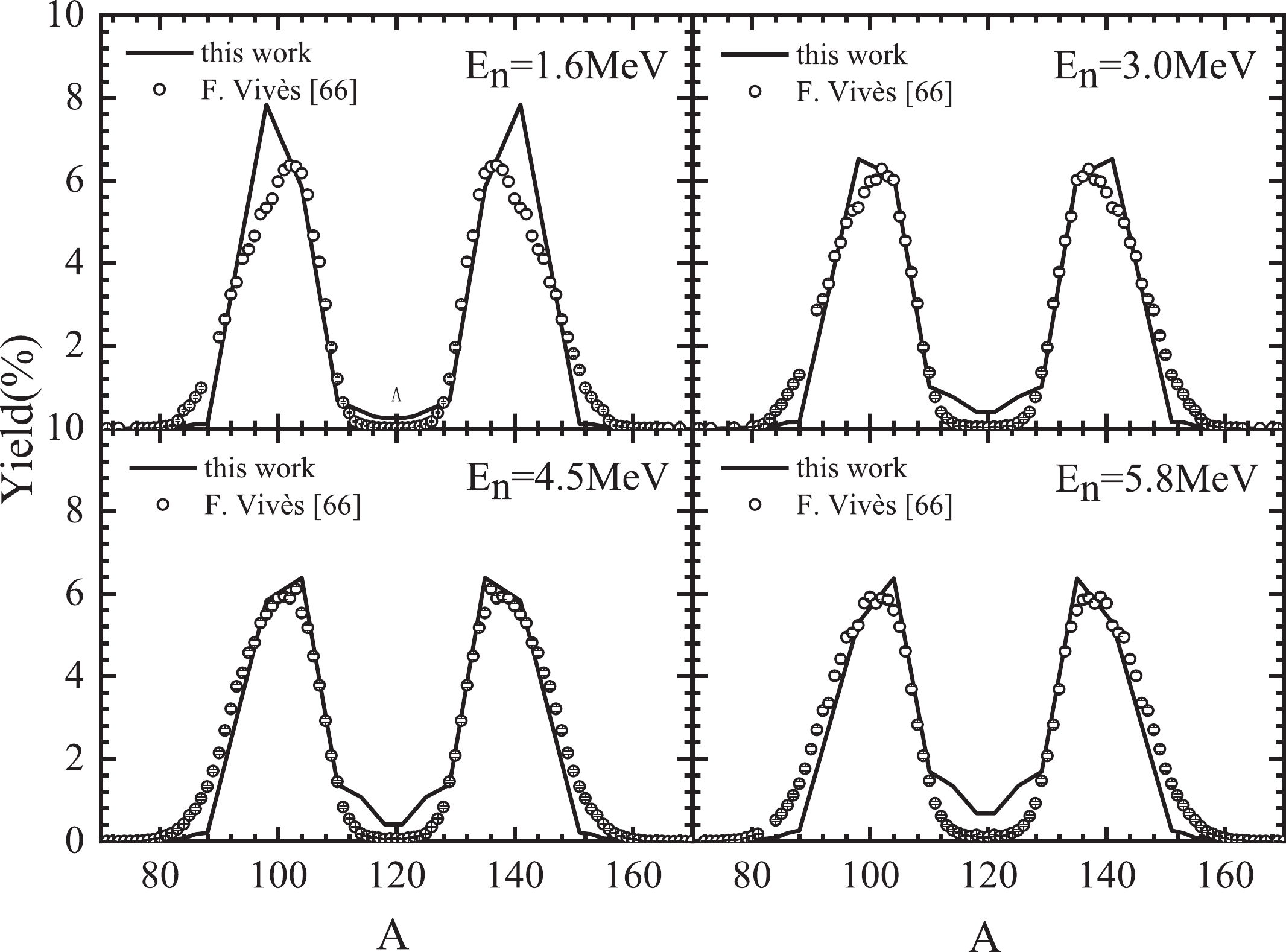 Figure2. Calculated and experimental results of pre-neutron-emission mass distributions for the 238U(n,f) reaction.
Figure2. Calculated and experimental results of pre-neutron-emission mass distributions for the 238U(n,f) reaction. Figure3. Comparison between the calculated pre-neutron-emission mass distributions (solid lines) and experimental data (symbols) for neutron-induced 238U with incident-neutron-energies of 10.0,16.5, 22.5, 32.8, 59.9, and 99.5 MeV.
Figure3. Comparison between the calculated pre-neutron-emission mass distributions (solid lines) and experimental data (symbols) for neutron-induced 238U with incident-neutron-energies of 10.0,16.5, 22.5, 32.8, 59.9, and 99.5 MeV.To study the influence of excitation energy on the shape of the mass distribution, we calculate 238U(n,f) at incident-neutron-energies of 10.0, 32.8, 59.9, and 99.5 MeV as shown in Fig. 4. With increasing incident-neutron-energy, there are obvious changes such as the increase in valley height as well as the decrease in peak height (including AL = 96-106 and AH = 133-143) in the pre-neutron-emission mass distributions [69]. At large excitation energies, the mass distribution is mainly explained by the liquid-drop model with the disappearance of the shell-correction energy. The improved scission point model also accurately describes these behaviors.
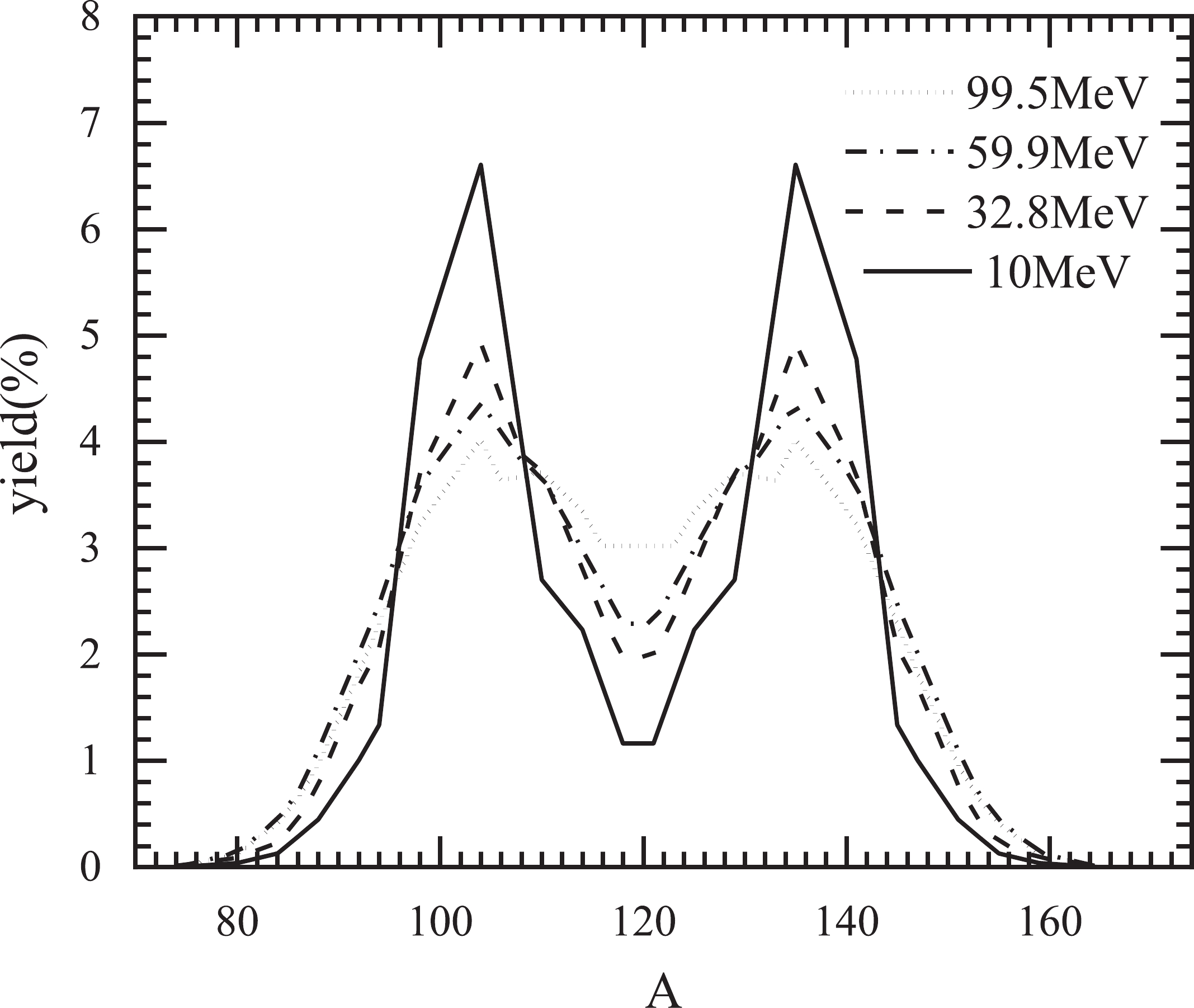 Figure4. Calculated pre-neutron-emission mass distributions for the 238U(n,f) reaction at different incident-neutron-energies.
Figure4. Calculated pre-neutron-emission mass distributions for the 238U(n,f) reaction at different incident-neutron-energies.Figure 5 and 6 show the calculated pre-neutron-emission mass distributions for 237Np(n,f) and 239Pu(n,f) reactions at different incident energies, respectively, which are compared with experimental data [70-71]. The comparisons show an overall good consistency. The calculated results show a good agreement with the experimental data, which indicates that the improved scission point model can reproduce the experimental results reasonably well for neutron-induced 237Np and 239Pu fission.
 Figure5. Comparison between the calculated pre-neutron-emission mass distributions (solid lines) and experimental data (symbols) for the 237Np(n,f) reaction with incident-neutron-energies of 1.0, 3.0, 4.0, and 5.5 MeV.
Figure5. Comparison between the calculated pre-neutron-emission mass distributions (solid lines) and experimental data (symbols) for the 237Np(n,f) reaction with incident-neutron-energies of 1.0, 3.0, 4.0, and 5.5 MeV.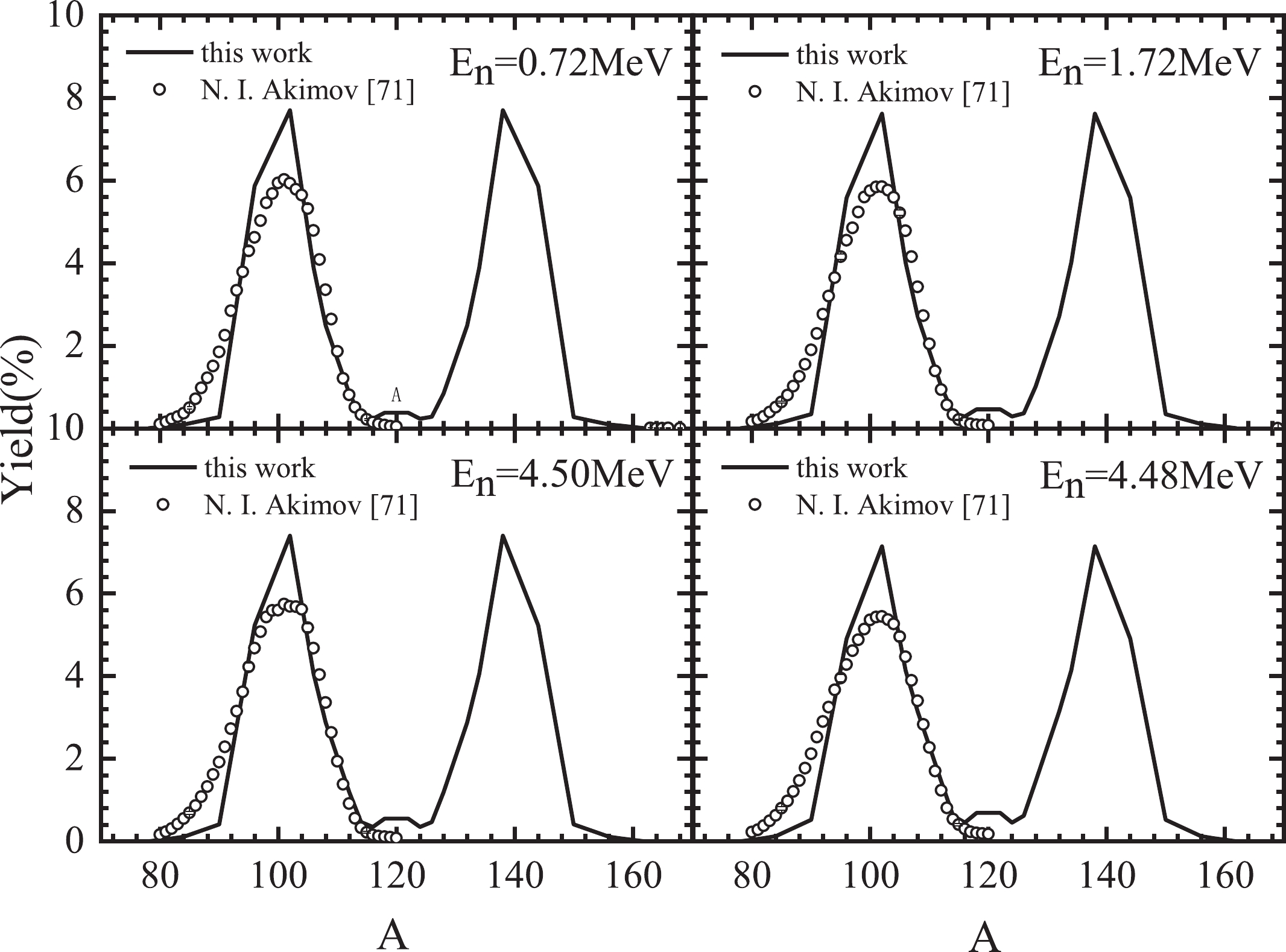 Figure6. Comparison between the calculated pre-neutron-emission mass distributions (solid lines) and experimental data (symbols) for the 239Pu(n,f) reaction with incident-neutron-energies of 0.72, 1.72, 2.72, and 4.48 MeV.
Figure6. Comparison between the calculated pre-neutron-emission mass distributions (solid lines) and experimental data (symbols) for the 239Pu(n,f) reaction with incident-neutron-energies of 0.72, 1.72, 2.72, and 4.48 MeV.Figure 7 shows the calculated pre-neutron-emission mass distributions for neutron-induced 232Th fission, which are compared with experimental data [67] with incident energies from 22.5 to 59.9 MeV. With increasing incident-neutron-energy, the double-humped mass distributions gradually change to a triple-humped shape, and the third-peak height even catches up with the peak of the asymmetric fission component for experimental data on pre-neutron-emission mass distributions. The results calculated by the improved scission point model agree with the experimental data on the asymmetric fission components. However, the calculated pre-neutron-emission mass distributions are opposite to the experimental data in the symmetric fission component. Particularly, the level density parameter
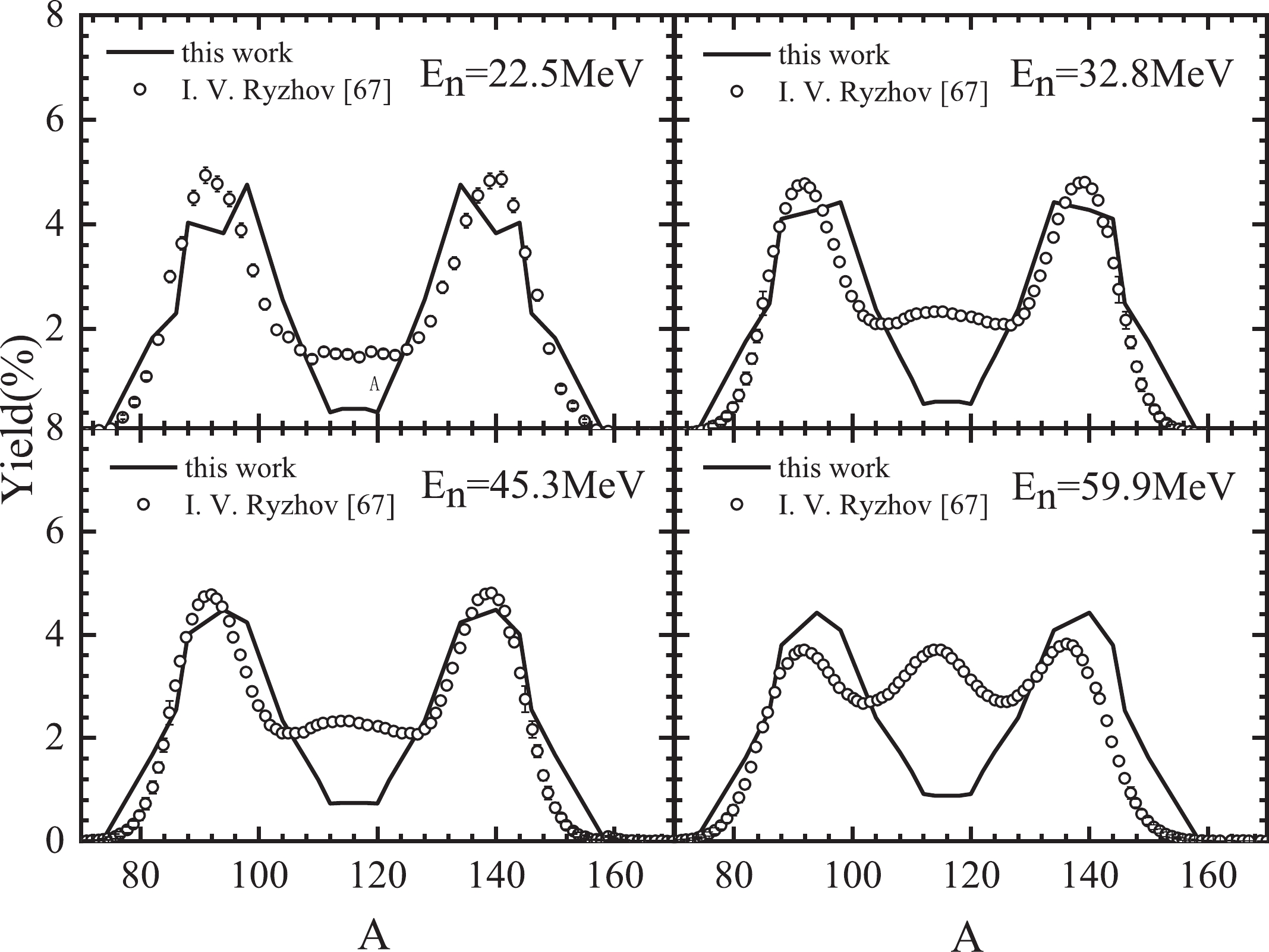 Figure7. Calculated and experimental results of pre-neutron-emission mass distributions for the 232Th
Figure7. Calculated and experimental results of pre-neutron-emission mass distributions for the 232ThThe improved scission point model can precisely calculate pre-neutron-emission mass distributions for neutron-induced actinide nuclei fission with incident-neutron-energies up to 99.5 MeV. Particularly, considering the excitation-dependent liquid drop energy, all calculated results are in good agreement with the experimental data, and the improved scission point model best describes the experimental results, especially in the yields and distribution tendency. The improved scission point model shows a significant advance with regard to accuracy.
As for low energy neutron-induced fission (lower than 5.5 MeV), the calculated pre-neutron-emission mass distributions are in good agreement with experimental data for the 235U, 238U, 237Np, and 239Pu(n,f) reactions. With increasing incident-neutron-energy, the improved scission point model performs very well for reproduction of pre-neutron-emission mass distributions for neutron-induced actinide nuclei fission for 238U with incident-neutron-energies up to 99.5 MeV, owing to the consideration of the excitation-dependent liquid drop energy model. Particularly, the effect of excitation energy on the peak-valley ratio of the mass yield is well described by the improved scission point model; the mass yields show an increase in the symmetric region and a decrease in the asymmetric region with increasing neutron energy.
The theoretical frame ensures that the improved scission point model is able to provide quantitative calculations of the pre-neutron-emission mass distributions with reasonable accuracy for a wide range of fissioning systems, which can be used to evaluate the fission fragment mass distributions for understanding the cosmos in astrophysical explosions and designing novel nuclear reactors and nuclear transmutation systems.
